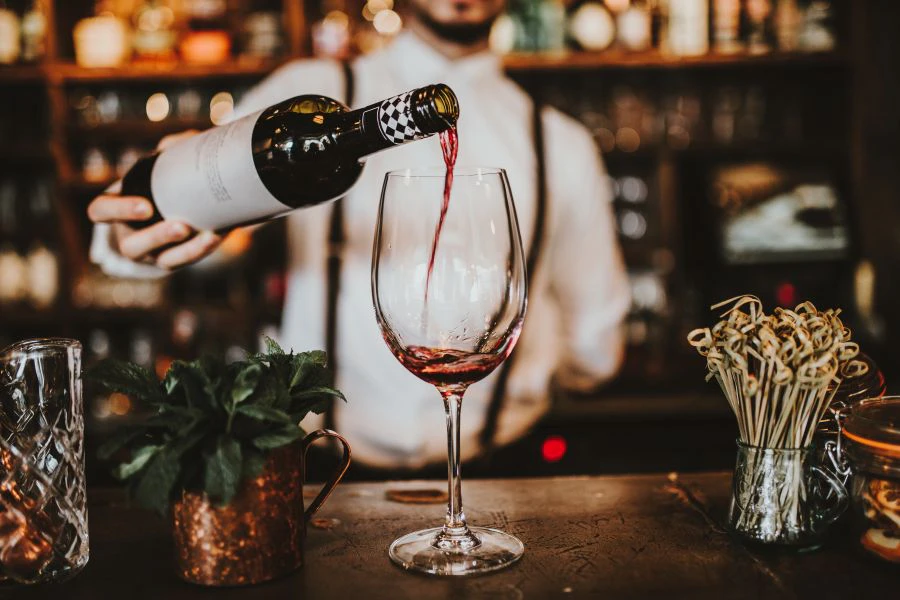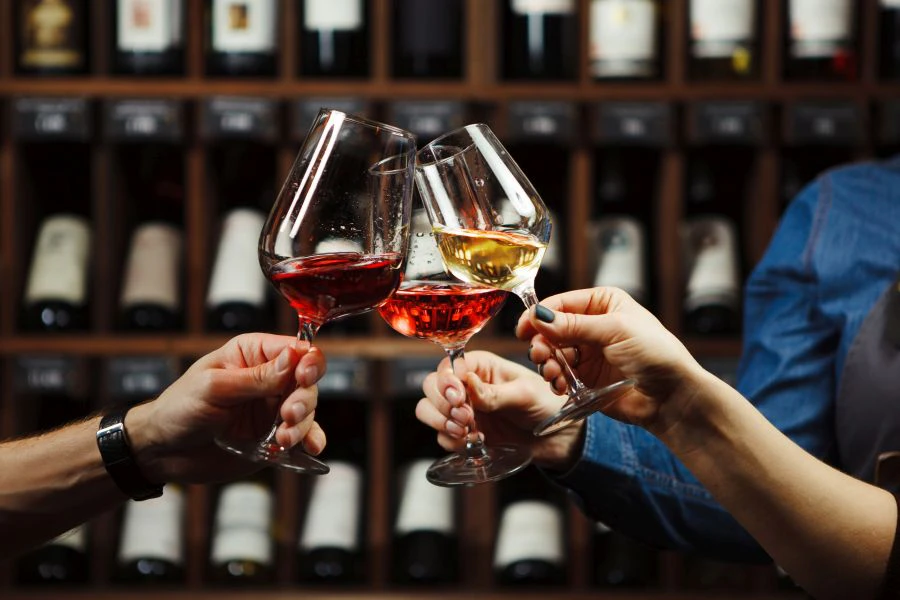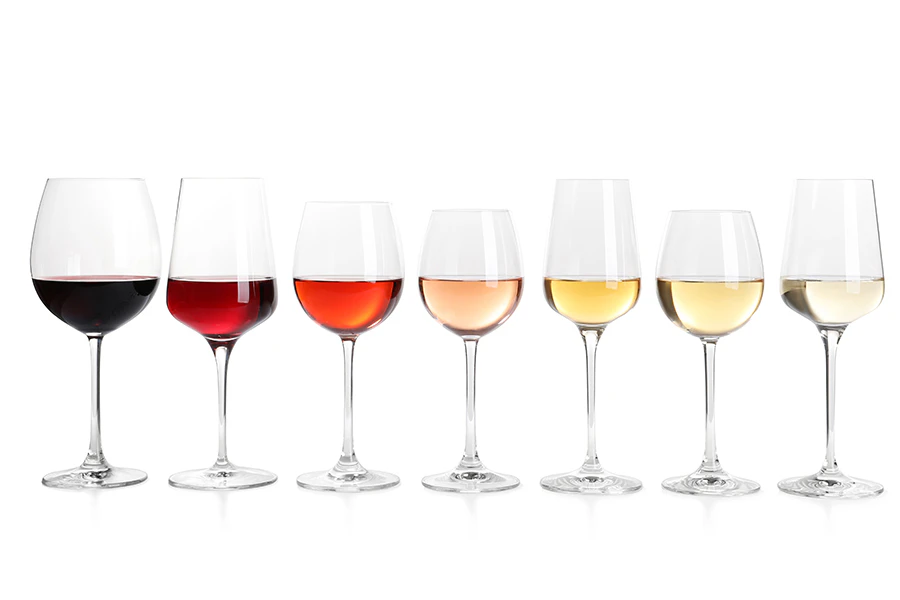
Wine cellar
Become a wine expert
Regardless of its color, wine presents itself as a drink that requires a certain mastery to be appreciated in the rules of the art. You do not serve a white wine like you serve a red wine, and the same goes for a rosé wine.
Here are four essential tips that will help you serve your wine like a true sommelier!

Choose the right wine for the right dish
If pairing between food and wine have always existed, they have been at the heart of trends in recent years. There are even courses that allow you to learn how to pair a wine with a dish like a true sommelier! If you are not a sommelier yet, you can still apply some simple rules.
To accompany red meat, it is necessary to favor a red wine, including with game. If your main dish consists of poultry or fish, you can serve a white wine without any problem, by betting rather on a dry wine. However, there are some exceptions: tuna fish, for example, can be accompanied by red wine, because its flesh is firmer.
To accompany the cheese, red wine is often recommended. However, some cheeses are much better accompanied by a white wine like a Sancerre. You can impress your guests by offering a beautiful platter with characterful cheeses such as Roquefort, a good Stilton or even a Fourme d'Ambert accompanied by a Sauternes, guaranteed effect! Finally, for dessert, you can opt for a sweet white wine from Alsace or a sweet wine from Bordeaux, for example.
If in doubt, a little research on the Internet can give you the best wine for each dish, but if you want to limit yourself to what you have in your cellar, following these basic rules will ensure that you do not make any mistakes.


Prepare the wine before tasting
Uncorking a good bottle when your guests are seated at the table can be part of your habits. However, this is not necessarily the best way to proceed to enjoy all the aromas of your wine. First, be sure to store the bottle in an upright position for at least 24 hours before serving it; this allows the wine deposit to stay at the bottom of the bottle.
Then, the ideal is to decant the wine before serving it. This consists of pouring the contents of the bottle into a carafe provided for this purpose. The latter has a special shape that contributes to oxygenate the wine, and thus to release its aromas. This is a practice that is recommended for most young wines, but for old wines, it is advisable to be more careful, because not all of them tolerate this approach well. A young wine can be decanted one to two hours before drinking, but for an old wine, it is better to drink it immediately after pouring it in a carafe.
Serve the wine at the right temperature
Not all wines are served at the same temperature. Failure to comply with this rule may even damage your precious beverage and deprive you of all its flavors. That would be a shame !
A fruity red wine like a Beaujolais or a Burgundy should be served at a temperature between 14 and 16°C. For a tannic red wine, which notably includes wine from the Rhône Valley, Bordeaux or Languedoc, aim for between 16 and 18°C.
For sweet white wine, such as Mouton Cadet, Sauternes, or Monbazillac, the ideal temperature is between 10 and 13°C. For a dry white wine, if it is like Côtes de Gascogne, you can serve it between 8 and 10°C, while if it is creamy like a Jura wine, it should be served between 10 and 13°C .
If you serve a rosé wine, for which to be served cool is essential, with an ideal temperature between 8 and 10°C. And please do not neglect sparkling wine, such as crémant and most champagnes, to be served between 6 and 10°C, while the great names of champagnes reveal all their flavors between 10 and 13°C. It is up to you to serve your bottles at the right temperature!


Do not neglect the choice of glass
Contrary to what one might think, there is not just one choice of wine glass. There are actually several kinds, which can complicate your task if you are not an expert in the matter! In most situations, you can serve your wine in a standard wine glass. However, if you want to push the experience a little further, you can purchase white wine glasses and red wine glasses.
On one side, the white wine glass is a stemmed glass of medium capacity, wide at the base, but which narrows fairly quickly towards the top: this is how the aromas are best diffused. On the other side, the red wine glass is larger than the white wine glass, and above all, it has the characteristic shape of the "red balloon". The objective is to allow good oxygenation of the wine before tasting it.
There are also glasses specifically designed to accommodate wines from certain regions, such as the Bordeaux wine glass and the Burgundy wine glass. If you particularly like a wine of this type and do regular tastings, this is a good buy. Otherwise, the more "classic" models, mentioned above, are suitable and can be purchased in many stores. All you have to do is to complete your wine glasses collection with a few champagne flutes and you are on the safe side!
And above all, please do not forget: when tasting, the wine glass is held either by the foot or by the stem. By holding it by the upper part, you risk warming up its contents, which would be a shame if it is served at the right temperature. If you do not have this reflex yet, try to think about it during your next wine tasting!


 Canada (English)
Canada (English)  México (Español)
México (Español)  USA (English)
USA (English)  América Central y el Caribe (Español)
América Central y el Caribe (Español)  Argentina (español)
Argentina (español)  Bolivia (español)
Bolivia (español)  Chile (español)
Chile (español)  Colombia (español)
Colombia (español)  Equador (español)
Equador (español)  Deutschland (Deutsch)
Deutschland (Deutsch)  France (Français)
France (Français)  Nederland (Nederlands)
Nederland (Nederlands)  United Kingdom (English)
United Kingdom (English)